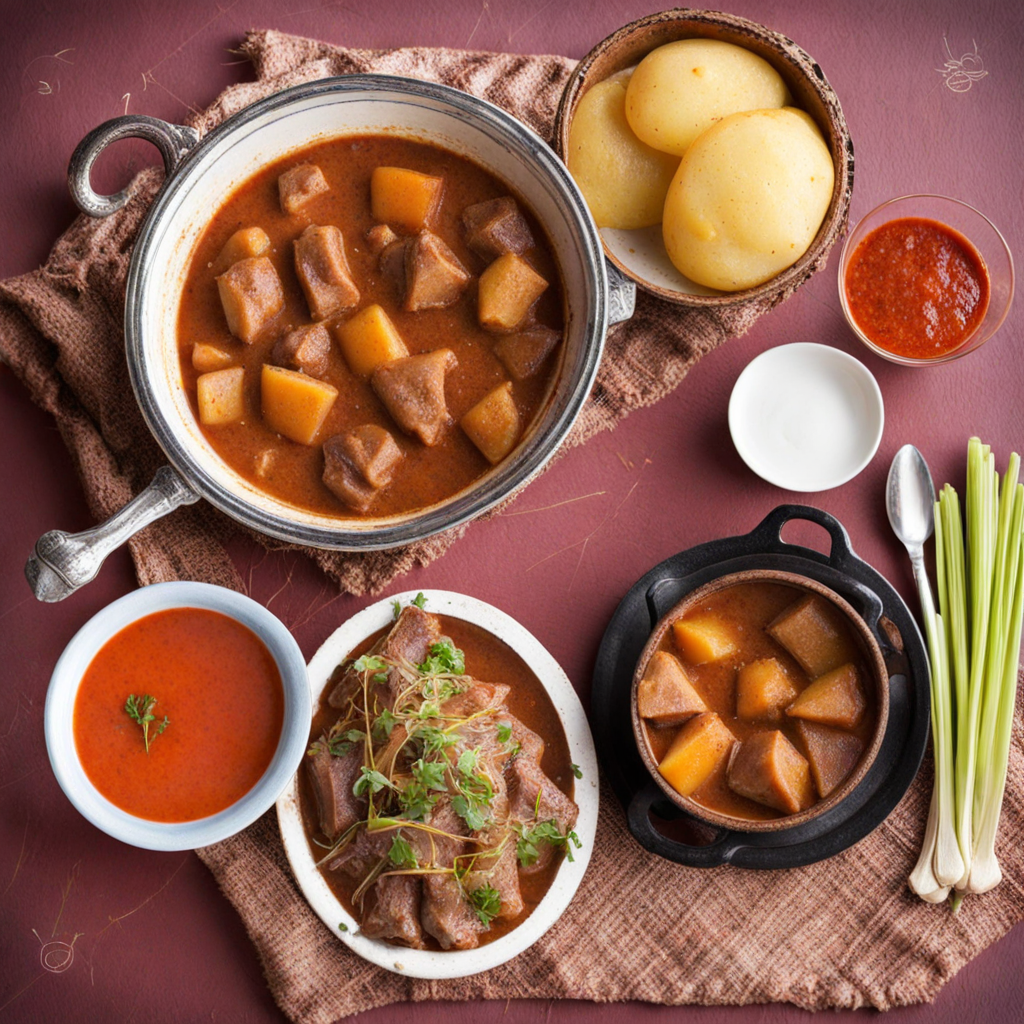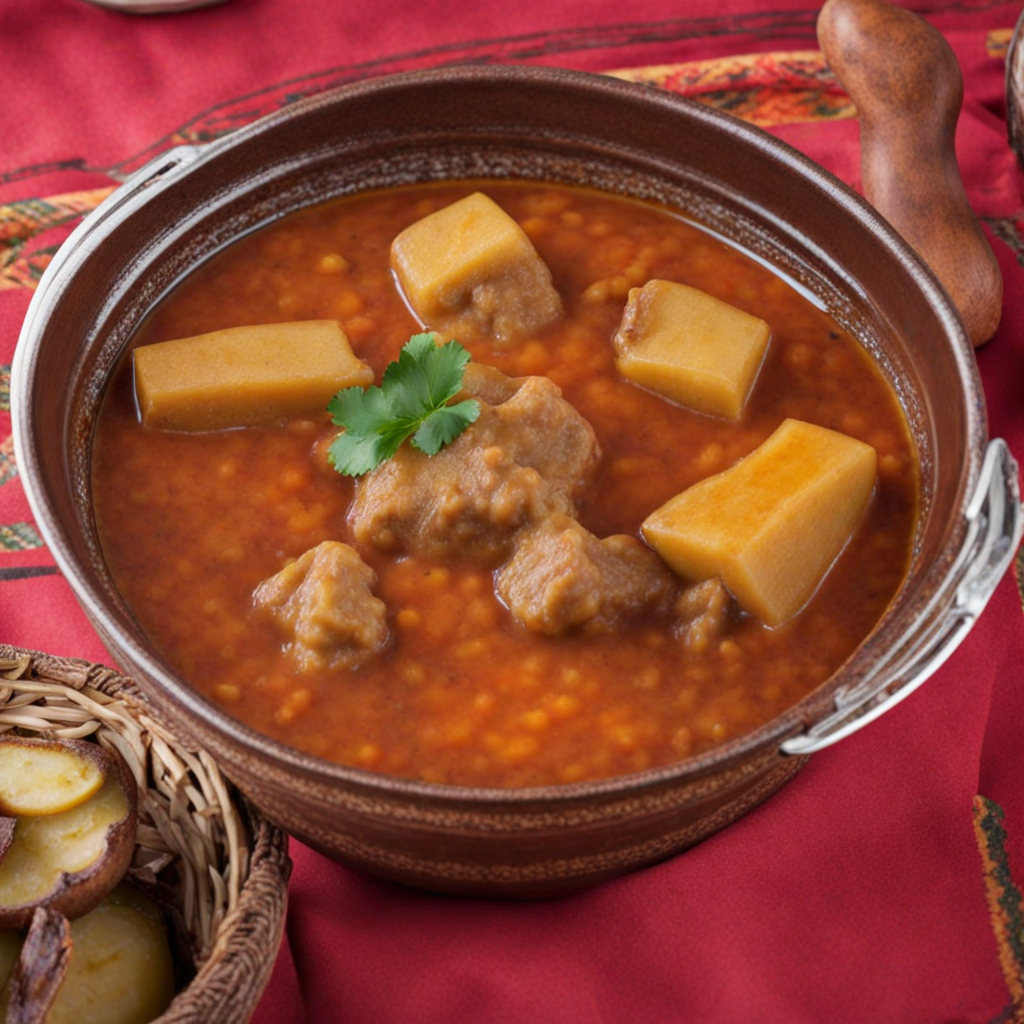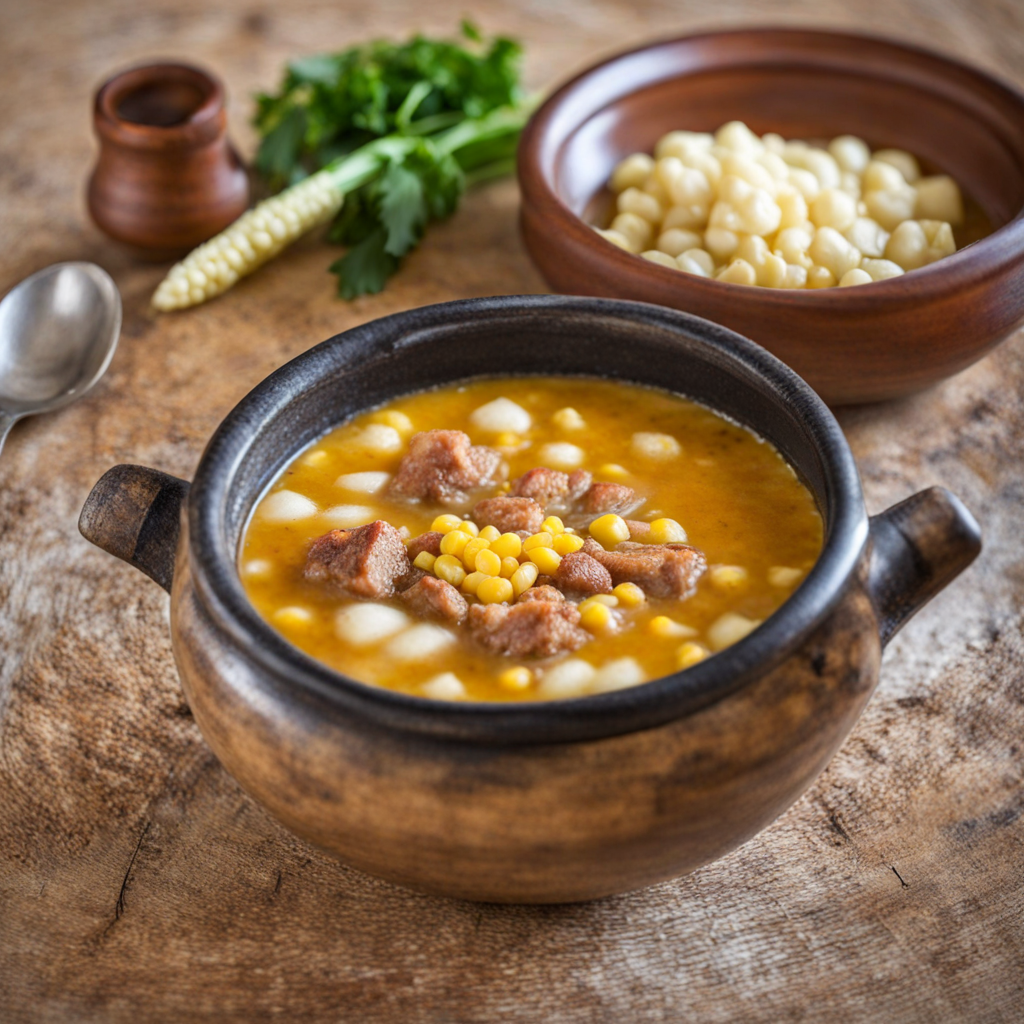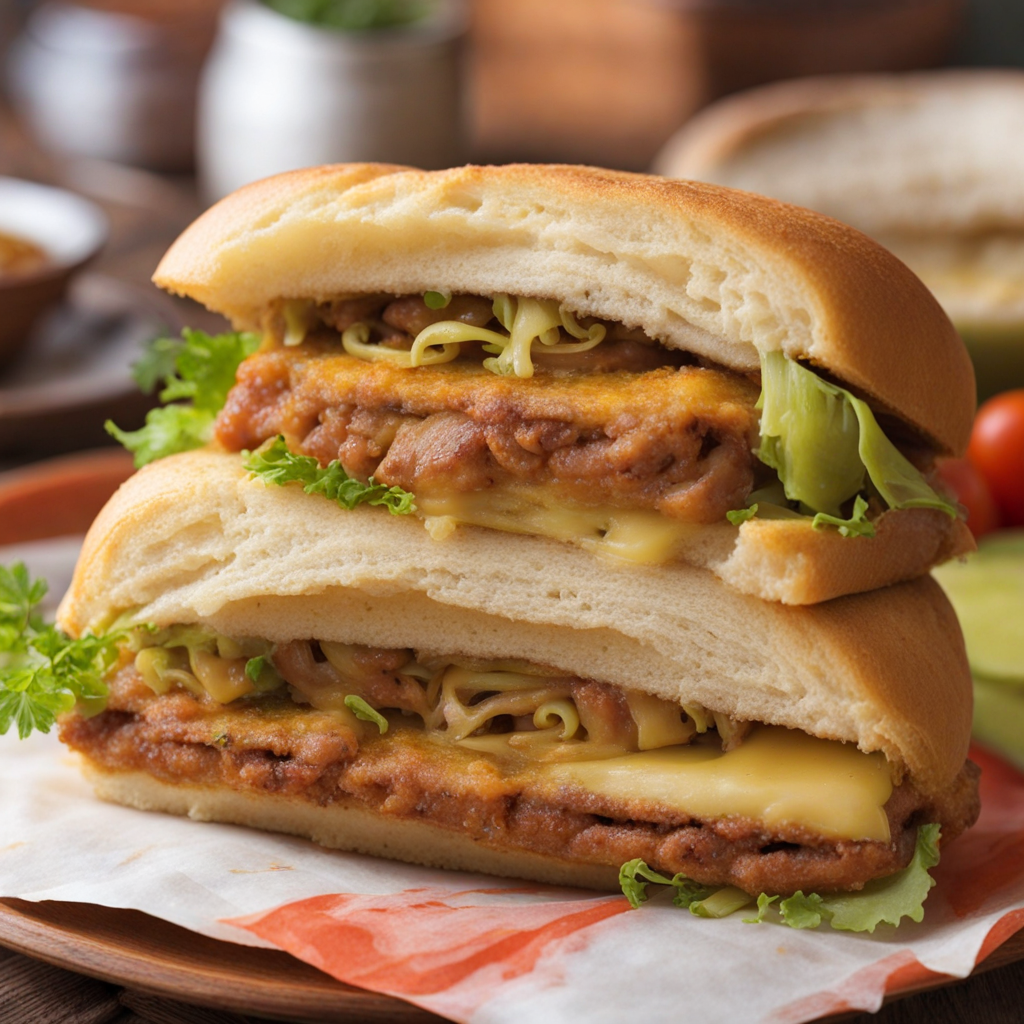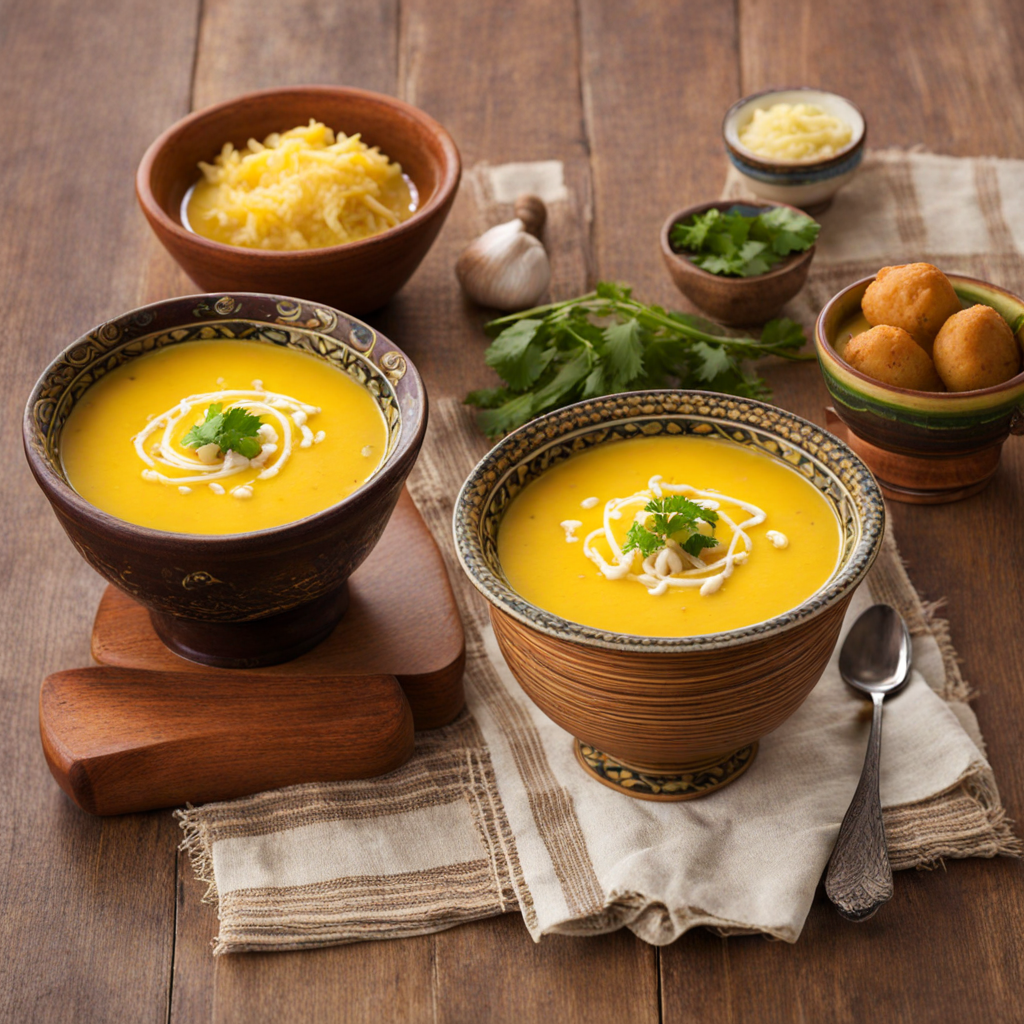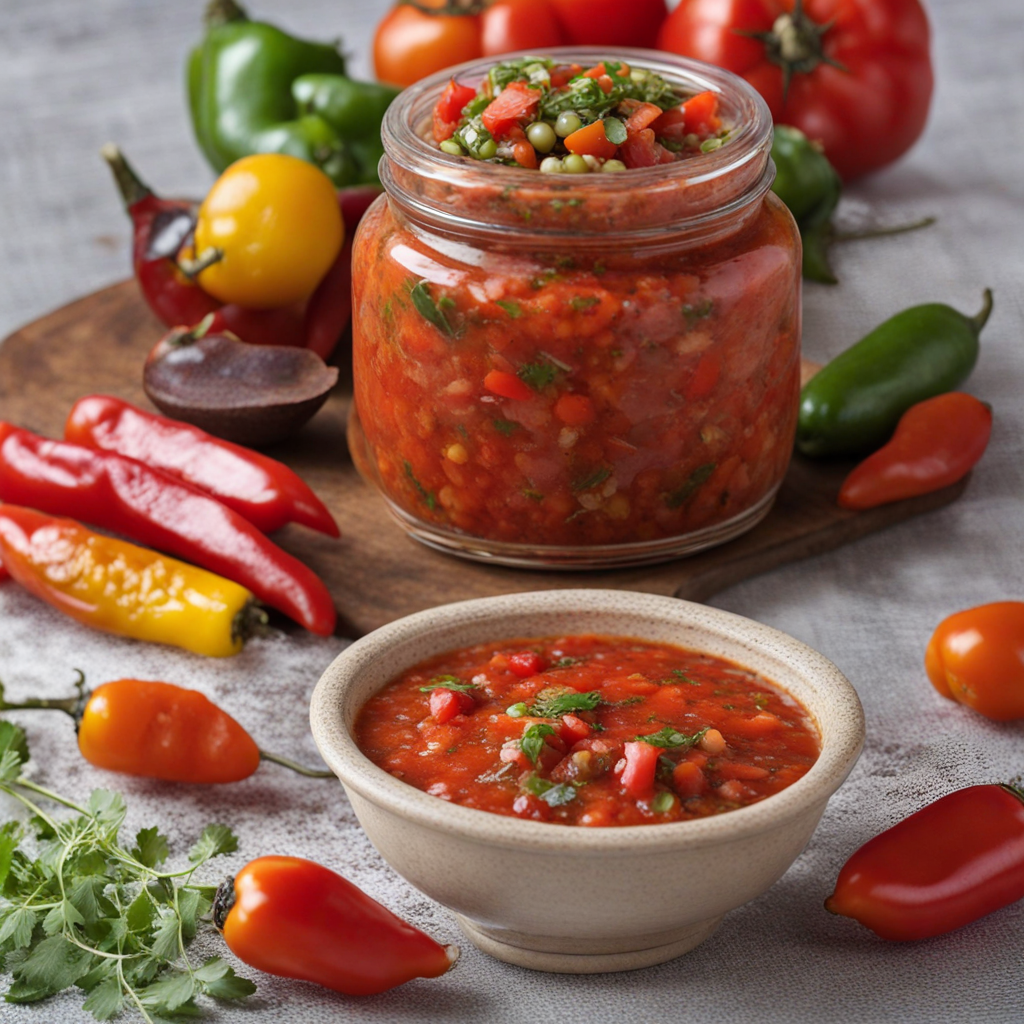Ranga Ranga
Ranga Ranga is a vibrant Bolivian dish that captures the essence of the country's rich culinary heritage. This enticing dish is primarily made from ripe plantains, which are sliced and fried to achieve a golden, crispy exterior while maintaining a tender, sweet interior. The plantains are often accompanied by a medley of colorful vegetables, such as bell peppers, onions, and tomatoes, sautéed to bring out their natural sweetness and vibrant flavors. The combination of textures and tastes creates an exciting experience for the palate, showcasing the simplicity and depth of Bolivian cuisine. What sets Ranga Ranga apart is its unique seasoning, which typically includes a blend of traditional spices such as cumin, garlic, and a hint of local chili peppers. This aromatic infusion not only enhances the flavors of the ingredients but also adds a delightful warmth that lingers on the tongue. The dish is often garnished with fresh cilantro or parsley, adding a touch of brightness and freshness that complements the richness of the fried plantains. Ranga Ranga is a dish that embodies the spirit of Bolivian cooking, where bold flavors and hearty ingredients come together harmoniously. Served as a main dish or as a side, Ranga Ranga is versatile and can be enjoyed in various settings, from casual family gatherings to festive celebrations. Its colorful presentation makes it a feast for the eyes, inviting anyone to take a bite. Pair it with a refreshing beverage, such as a local fruit juice or a glass of chicha, and you have a meal that is not only delicious but also an authentic representation of Bolivia's diverse culinary landscape. Discovering Ranga Ranga is not just about tasting a new dish; it's about experiencing the culture and warmth of Bolivian hospitality.
How It Became This Dish
The Engaging History of Ranga Ranga: Bolivia's Culinary Gem #### Origin Ranga Ranga, a vibrant dish from Bolivia, is a testament to the rich culinary heritage of the Andean region. This dish, which is often made with a base of corn, typically features ingredients like cheese, potatoes, and sometimes meat. The name "Ranga Ranga" is thought to derive from the indigenous languages of the Aymara or Quechua people, with interpretations that evoke ideas of something being mixed or blended, reflecting the dish's nature of combining varied ingredients. Corn, or "maíz," is a foundational element in Bolivian cuisine, a staple that has been cultivated in the region for thousands of years. Archaeological evidence suggests that corn was domesticated in the Americas over 9,000 years ago, significantly predating European contact. The Andean people have long celebrated this crop, incorporating it into their daily lives and spiritual practices. Ranga Ranga embodies this deep-rooted connection to corn, showcasing its versatility as both a sustenance and a cultural symbol. #### Cultural Significance Ranga Ranga is not just a dish; it is a culinary expression of Bolivian identity, particularly within indigenous communities. The preparation and consumption of Ranga Ranga often coincide with communal gatherings and traditional celebrations, reinforcing social bonds and cultural traditions. It serves as a reminder of the importance of community in Andean societies, where food is often prepared and enjoyed together. In many Andean cultures, food is imbued with spiritual significance. For instance, the act of cooking and sharing Ranga Ranga can be seen as a ritual that honors Pachamama, or Mother Earth, reflecting gratitude for the bounty of the land. This connection to nature is integral to indigenous beliefs and practices, emphasizing sustainability and respect for the environment. Furthermore, Ranga Ranga is often associated with regional festivals and agricultural celebrations, where it is served as part of the festivities. These events provide an opportunity for communities to come together, share their culinary heritage, and pass down traditional recipes and cooking techniques from generation to generation. The dish can be seen as a medium for storytelling, with each family or community having its unique version that reflects local ingredients and traditions. #### Development Over Time The history of Ranga Ranga is also a story of adaptation and evolution. As Bolivia has experienced waves of cultural change—from the pre-Columbian era to Spanish colonization and beyond—so too has its cuisine. The introduction of new ingredients and cooking techniques has transformed traditional dishes, including Ranga Ranga. During the Spanish colonization in the 16th century, European settlers brought with them a variety of foods, such as cheese and various meats, which began to be incorporated into traditional indigenous recipes. This blending of culinary practices led to the development of Ranga Ranga as we know it today. The dish often features local cheeses, such as "queso fresco," which adds a creamy texture and rich flavor that complements the earthiness of corn and potatoes. Throughout the 19th and 20th centuries, Bolivia underwent significant social and political changes, including the struggle for indigenous rights. With greater recognition of indigenous cultures and traditions, there has been a revival of interest in traditional foods like Ranga Ranga. This resurgence has been fueled by a growing appreciation for local ingredients and sustainable practices, as well as a desire to preserve culinary heritage. In recent years, Ranga Ranga has also gained attention beyond Bolivia's borders. As global interest in traditional and indigenous cuisines continues to rise, Bolivian dishes have begun to find their place on the international stage. Chefs and food enthusiasts are exploring the depths of Andean cuisine, showcasing dishes like Ranga Ranga in culinary festivals and gourmet restaurants. This visibility not only celebrates the dish but also raises awareness about the cultural significance of Bolivian food traditions. #### Preparation and Variations The preparation of Ranga Ranga is a labor of love, often involving multiple steps and the use of fresh, locally sourced ingredients. The dish typically starts with the preparation of the corn, which may be ground into a fine flour to create a dough. This dough is then mixed with potatoes, cheese, and sometimes herbs or spices, resulting in a colorful and flavorful mixture. The cooking process can vary, with some versions of Ranga Ranga being baked, while others are cooked on a griddle or in a pot. The final dish is often served hot, garnished with fresh herbs or accompanied by a side of spicy sauce, such as "salsa llajwa," which is made from tomatoes, chili peppers, and cilantro. This adds a delightful kick to the dish, enhancing its flavor profile. As with many traditional dishes, regional variations of Ranga Ranga abound. In different parts of Bolivia, families may add their unique twists, incorporating local ingredients or family secrets handed down through generations. Some may prefer a more vegetarian version, while others might include meats like chicken or beef, showcasing the adaptability of the dish to different tastes and dietary preferences. #### Conclusion Ranga Ranga is more than just a dish; it is a reflection of Bolivia's rich cultural tapestry, intertwining history, community, and identity. From its origins in ancient Andean agriculture to its modern-day adaptations, Ranga Ranga captures the essence of Bolivian culinary heritage. As the world continues to embrace the beauty of diverse food traditions, Ranga Ranga stands as a delicious reminder of the importance of celebrating and preserving our culinary roots. Through each bite, one can taste the story of a nation, its people, and its unwavering connection to the land.
You may like
Discover local flavors from Bolivia


